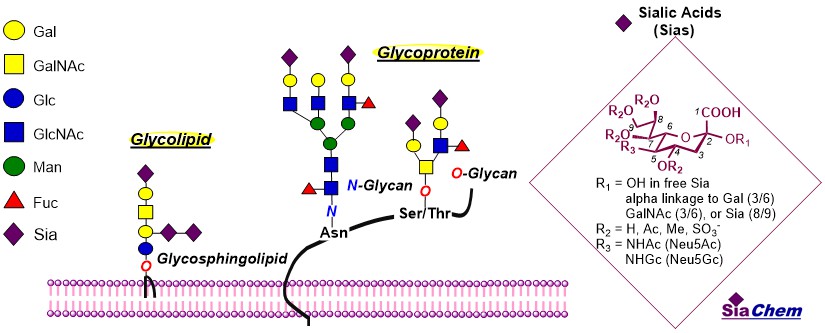

Sialic acids (Sias) are a family of nine-carbon sugar neuraminic acid (5-amino-3,5-dideoxy-D-glycero-D-galactononulsonic acid) derivatives present at the terminal of the glycans of both glycolipid and glycoprotein on all vertebrate cells. Sialoglycans are glycans with Sias at their terminal. Sialoglycans occur in an extraordinary structural variety, which arises from the composition and complexity of the glycan chain, differences in the glycosidic linkage through which the Sia is joined to the adjacent sugar residue, and differential modification of Sias. Sias in glycans occur as the α-anomer and are linked via α-2,3 and α-2,6 glycosidic bonds to scaffold Gal(NAc) or GlcNAc moieties, respectively, or via α-2,8 or α-2,9 glycosidic bonds to other sialic acids. The type and distribution of sialic acids and sialylglycans are highly specific for different tissues and host species [1-4].
